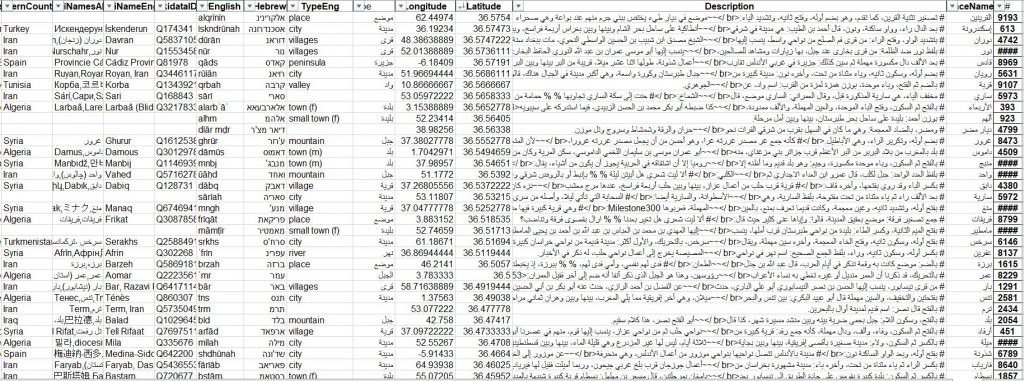Living on the Edge: The Minorities of the Muslim Caliphate’s Borderlands
The project portrays the frontiers and borderlands of the Muslim Caliphate in the period between 650-950 CE (under the later Rashidun and the Umayyad and Abbasid dynasties). The lengthy frontiers were, on the one hand, a central arena for commerce and military activity and, on the other hand, a peripheral zone that drew minorities to settle in these regions. Among the communities that inhabited them were the Jews, Armenians, Assyrians, Berbers, and many more; in the project, we focus on the Jewish community.

The first stage of the project deals with characterizing the structure of the frontiers of the Caliphate, as described in the classical Muslim geography. We created a database containing the following criteria: place names, locations, place types, administrative hierarchy, place descriptions, and references. We reconciled the data with Wikidata and al-Ṯurayyā project. The Gazetteer (index of places) is profoundly based on Muʿjam al-buldān of Yāqūt al-Hamawi (1179–1229) which was made digitally available in the contribution of the Shamela, Kitab, and OpenITI projects. The OpenITI affords a machine-actionable corpus of premodern texts in Arabic by developing and using OCR (automatic text recognition) and structuring the resulting digital editions using a designated markdown format. This stage also includes digital mapping of the database and an analysis of geographical similarities in terms of military deployment, minority distribution, settlement densities, administrative division, and network relations of settlements and activities.

The second stage of the project analyses the particular attributes of the Jewish community in the borderlands, assessing its demography, lifestyle, and activities. For that purpose, we will use information extraction and NER (Named Entity Recognition) methods from available premodern texts in Arabic, Hebrew, and English.

Our Team

Dr. Moran Zaga - Head Of Project

Prof. Efraim Lev - Supervisor



